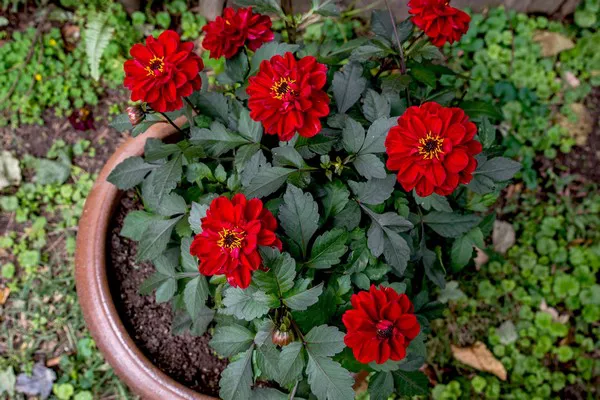Keeping your plants healthy and thriving can sometimes feel like a battle against pests. Whether you’re dealing with aphids, mealybugs, or any other unwanted visitors, resorting to chemical pesticides may not always be the best solution, especially if you’re growing edible plants or trying to maintain an eco-friendly garden. Fortunately, there are many natural methods you can employ to keep your plants pest-free. In this article, we’ll explore a variety of techniques for controlling plant pests without resorting to harmful chemicals.
1. Companion Planting
One effective way to deter pests is by practicing companion planting. Certain plants emit scents or chemicals that repel insects, while others attract beneficial insects that prey on pests. For example, planting marigolds alongside tomatoes can deter nematodes, while attracting ladybugs and other predators that feed on aphids. Similarly, planting basil near your tomatoes can help repel tomato hornworms. Research which plants complement each other well and incorporate them into your garden layout to naturally repel pests.
2. Neem Oil
Derived from the seeds of the neem tree, neem oil is a natural pesticide that’s effective against a wide range of pests, including aphids, whiteflies, and spider mites. Neem oil works by disrupting the insect’s hormonal balance, making it difficult for them to feed, grow, and reproduce. To use neem oil, dilute it according to the manufacturer’s instructions and spray it onto affected plants. Be sure to apply it in the evening to avoid harming beneficial insects like bees, and reapply after rain.
3. Diatomaceous Earth
Diatomaceous earth is a fine powder made from the fossilized remains of diatoms, a type of algae. It works by dehydrating insects that come into contact with it, making it an effective natural pesticide for crawling pests like ants, cockroaches, and slugs. Simply sprinkle diatomaceous earth around the base of plants or on the soil surface to create a barrier that pests won’t cross. Be sure to use food-grade diatomaceous earth, as other forms may contain additives that could harm your plants.
4. Garlic Spray
Garlic is well-known for its pest-repelling properties, thanks to its strong odor and natural insecticidal compounds. To make a garlic spray, simply blend a few cloves of garlic with water and strain out the solids. Add a small amount of liquid soap to help the mixture adhere to plant surfaces, then spray it onto affected plants. Garlic spray is effective against a variety of pests, including aphids, caterpillars, and beetles. Be mindful not to apply it too frequently, as it may also repel beneficial insects.
5. Homemade Insecticidal Soap
Insecticidal soap is a gentle yet effective way to control soft-bodied pests like aphids, mealybugs, and spider mites. You can make your own insecticidal soap by mixing a few teaspoons of liquid dish soap with water in a spray bottle. Be sure to use a mild, non-detergent soap to avoid damaging your plants. Spray the solution onto affected plants, focusing on the undersides of leaves where pests tend to congregate. Repeat every few days as needed until the infestation is under control.
6. Beneficial Insects
Introducing beneficial insects into your garden is a natural and sustainable way to control pest populations. Ladybugs, lacewings, and parasitic wasps are just a few examples of beneficial insects that prey on common garden pests like aphids, caterpillars, and whiteflies. You can attract these beneficial insects to your garden by planting a diverse range of flowering plants, providing shelter and water sources, and avoiding the use of broad-spectrum pesticides that could harm them.
7. Physical Barriers
Sometimes the simplest solutions are the most effective. Physical barriers like row covers, netting, and sticky traps can prevent pests from reaching your plants and laying eggs. Row covers made from lightweight fabric allow sunlight and water to penetrate while creating a barrier that keeps pests out. Netting can be used to protect fruit trees and berry bushes from birds and small mammals. Sticky traps are particularly useful for catching flying pests like fungus gnats and whiteflies.
8. Crop Rotation
Rotating your crops from year to year can help disrupt the life cycles of pests and prevent them from building up in the soil. Different plant families are susceptible to different pests and diseases, so rotating your crops can help break the cycle of infestation. For example, if you’ve had a problem with tomato hornworms in one area of your garden, planting a different crop like beans or lettuce in that spot the following year can help reduce the likelihood of a recurrence.
Conclusion
While dealing with plant pests can be frustrating, there are plenty of natural and sustainable methods for controlling them without resorting to chemical pesticides. By practicing companion planting, using natural deterrents like neem oil and garlic spray, and attracting beneficial insects to your garden, you can keep your plants healthy and pest-free while minimizing harm to the environment. Experiment with different techniques to find what works best for your garden, and remember that a little patience and persistence can go a long way in maintaining a thriving, pest-resistant garden.


